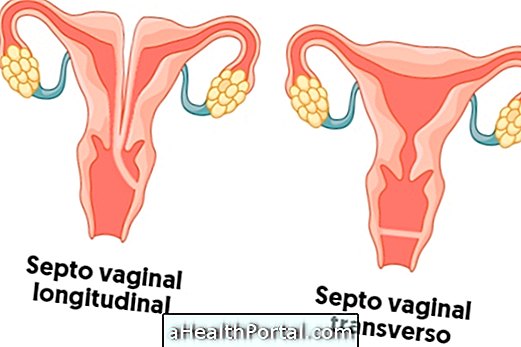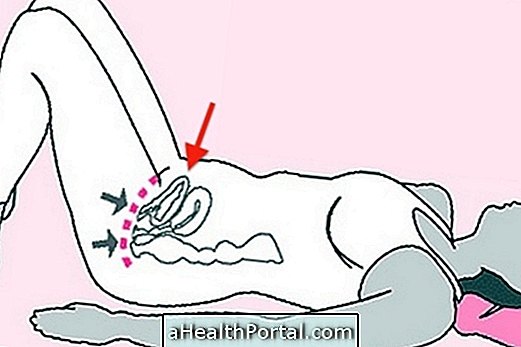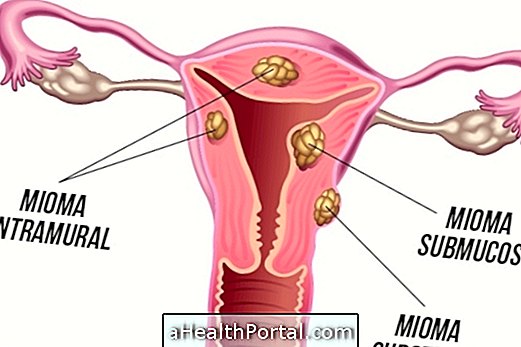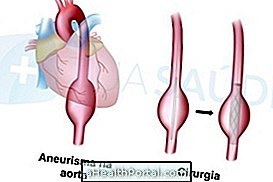The vaginal septum is a rare congenital malformation in which there is a wall of tissue that divides the vagina and uterus into two spaces. Depending on how this wall divides the woman's reproductive tract, there are two main types of vaginal septum:
- Transverse vaginal septum : the wall develops from one side of the vaginal canal to the other;
- Vaginal septum longitudinal : the wall goes from the entrance of the vagina to the uterus, dividing the vaginal canal and uterus into two parts.
In both cases, the external genital region is completely normal and, therefore, most cases are not identified until the girl begins her menstrual cycle or has her first sexual experience, since the septum can prevent the passage of blood menstruation or even intimate contact.

The vaginal septum is healing, and surgery is needed to correct the malformation. Thus, if a malformation is suspected in the vagina, it is important to consult a gynecologist to confirm the diagnosis and start the best treatment, reducing the discomfort.
Main symptoms
Most of the symptoms that may indicate the presence of a vaginal septum only arise when entering puberty, and may include:
- Severe pain during the menstrual cycle;
- Absence of menstruation;
- Pain during intimate contact;
- Discomfort when using inner absorbent.
In addition, in women with a transverse septum it is still possible to feel a lot of difficulty during intimate contact, as it is not usually possible for the penis to penetrate completely, which may lead some women to suspect a short vagina, for example .
Many of these symptoms are also similar to those of endometriosis, but in these cases it is more common to experience an intense bleeding along with menstruation, in addition to pain when urinating or defecating, for example. However, the best way to confirm the diagnosis is by consulting a gynecologist. See a more complete list of endometriosis symptoms.
How to confirm the diagnosis
Some cases of vaginal septum can be identified in the first consultation with the gynecologist, since it is often possible to observe the changes only with an observation of the pelvic region. However, the doctor may also ask for some diagnostic tests, such as transvaginal ultrasound or magnetic resonance imaging, especially in cases of transverse septum, which are more difficult to identify only with observation.
How is the treatment done?
When the vaginal septum does not cause any symptoms or discomfort for the woman, treatment is usually not necessary. However, if there are symptoms, your doctor usually recommends having surgery to correct the malformation.
The easiest cases to treat are the transverse septum, in which only the portion of tissue that is blocking the vaginal canal needs to be removed. In cases of longitudinal septum, it is usually necessary to reconstruct the interior of the uterus so that only one cavity forms.





















